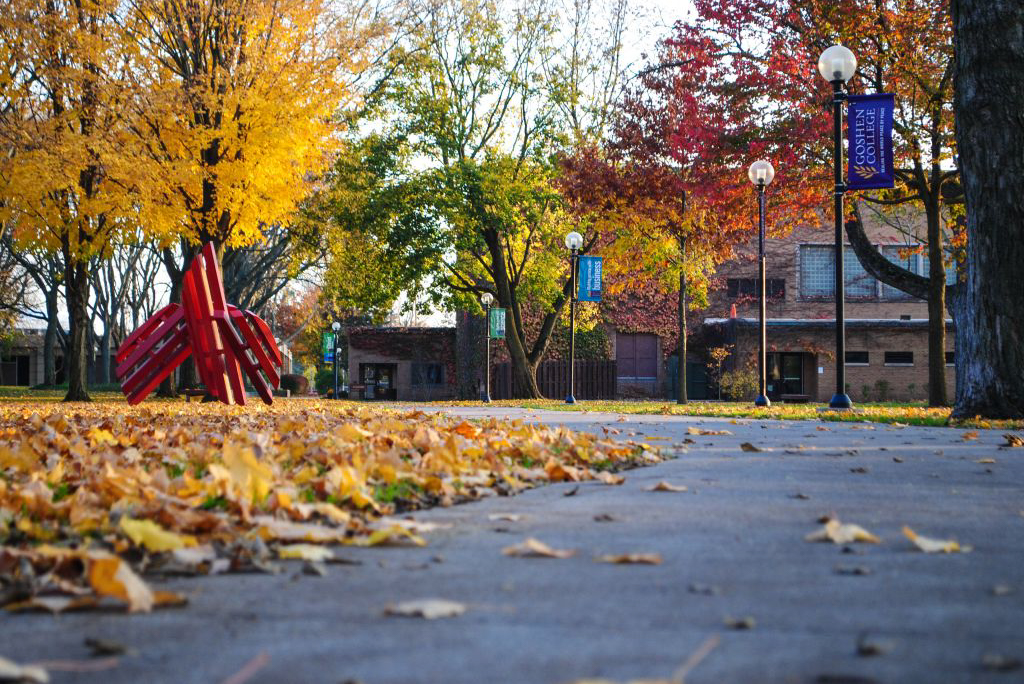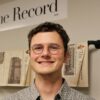Art is abundant at Goshen College. Galleries are located in Good Library, the music center and the Union Building.
Much of the art on display, however, is located outside of these art-specific locations. Scattered throughout campus, works such as “Broken Shield” greet students and staff as they make their way through the day, popping up in surprising locations.What goes into purchasing, maintaining and rotating artwork located outside of specific art galleries?
“The purchases happen in a variety of ways,” said Merrill Krabill, an art professor at Goshen. “Some of the work is donated.”
“There’s also a collection of art that has been purchased from visiting artists,” Krabill continued. “There’s a visiting artist that comes every year that’s supported by the Eric Yeak Kenagy endowment. We like to purchase a piece from these exhibits if it’s possible.”
It can be easy to walk past sculptures without giving a second glance, but knowing the history of pieces like “Broken Shield” can ignite more appreciation for their role on campus.
“Broken Shield,” a red sculpture located in the middle of campus, is an iconic installment at GC. It was created in 1981 by John Mishler, who is now an art professor at the college.
The creative process was a communal effort, with Mishler enlisting help from his art students at the time.
Over the years, this piece has served as a home for protests, with students gathering around it in 1991 to protest the Gulf War and in 2009 to protest a discriminatory policy against LGBTQIA staff members. The peaceful, renewing implications of the sculpture, as well as its central campus location, make it an ideal meeting spot for activism.
In her opening address to students this year, President Becky Stoltzfus said, “[Mishler’s] inspiration was the passage from Isaiah 2, which anticipates an age of peace when nations will ‘beat their swords into plowshares,’ The shapes in the sculpture are suggestive of instruments used to work the earth. Both idea and form are representative of a peaceful way of life, living in harmony with the land.”
Mishler was later commissioned to build “Sky Rhythms,” the stainless steel piece located outside of the Roman Gingerich Recreational Fitness Center. Weighing two tons, it is the artist’s heaviest piece, but the kinetic twists and turns of the sculpture signify movement and activity: a fitting tribute to a fitness center.
In the past, a committee was in charge of overseeing outdoor artwork like these pieces, but recently, the group has gone dormant.
“That committee’s responsibility has been to look after art; it’s a relatively big job,” said Krabill. “We’re working to try to get it going again.”




